Gasket Installation Procedures
Assuring Joint Integrity and Maximum Safety
A Guide to Successful Gasket Installation
Successfully sealing a flanged connection is dependent upon components upon all components of well-designed flange system working well together. This article provides guidance to maintenance operators, engineers, and fitters to ensure successful gasket installation and assembly of bolted connections. It is intended to complement other plant approved installation procedures.
Tools Required : -
Special tools are required for cleaning and tensioning the fasteners. Additionally always use standard safety equipment and follow good safety practices. Acquire the following eqipment prior to installation.
- Calibrated torque wrench, hydraulic or other tensioner
- Wire brush (brass if possible)
- Helmet
- Safety goggles
- Lubricant
- Other Specified equipment
1) Clean and examine
Remove all foreign material and debris from seating surfaces fasteners (bolts or studs) , nuts, and washers. Use plant-specified dust control procedures. Examine Fasteners (bolts or studs), nuts and washer for defects such as burr or cracks. Examamine flange surfaces for warping, radial scores, heavy tool marks or anything prohibiting proper gasket seating. Replace components if found to be defective. If in doubt, seek advice.
2) Align flanges
Align flange faces and bolt holes without using excessive force. Report any misalignment.
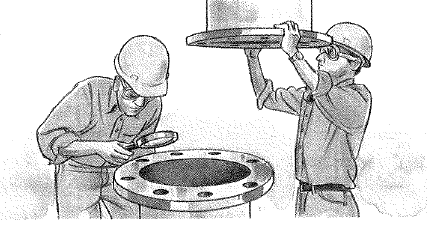
3) Install Gasket
Assure Gasket is the specified size and material. Examine the gasket to ensure it is free to defects. carefully insert Gasket between flanges. Make sure the gasket is centered between the flanges.
Do not use jointing compounds or release agents on the gasket or seating surfaces unless specified by the gasket manufacturer.
Bring the flanges together, ensuring the gasket isn't pinched or damaged.
4) Lubricate load-bearings surfaces
Use only specified or approved lubricants.
Liberally apply lubricant uniformly to all thread, nut washer load bearing surfaces. Ensure lubricant doen't contaminate either flange or gasket face.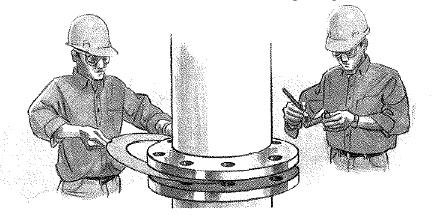
5) Lubricate load-bearings surfaces
Always use proper tools: calibrated torque wrench or other controlled tensioning device. Consult your gasket manufacturer and/or engineering department for guidance on torque specifications.
Always torque nuts in cross bolt tightening pattern. Tighten the nuts in multiple steps :
Step 1 : - Tighten all nuts initially by hand (Larger bolts may required a smallhand wrench.)
Step 2 :- Toruqe each nut to approximately 30% of full torque.
Step 3 :- Torque the nuts to approximately 60% of full torque.
Step 4 :- Torque each nuts to full torque, again using the cross bolt tigheting pattern. (Large-diameter flanges may require additional tightening passes.)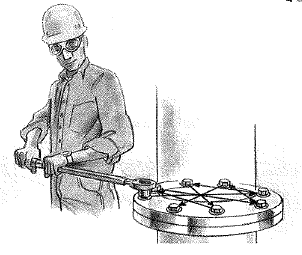
6) Retightening
Caution : Consult your gasket manufacturer and/or engineering department for guidance and recommendations on retightening.
Do not retorque elastomer-based, asbestos-free gaskets after they have been exposed to elevated temperatures unless otherwise specified Retorque fasteners exposed to aggressive themal cycling.
All Retorquing should be performed at ambient temperature and atmospheric pressure.

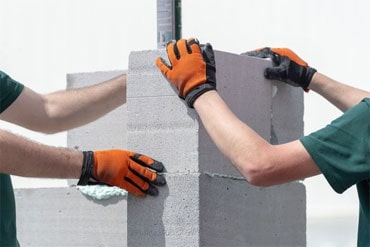 Aerated Concrete Block Industry
Aerated Concrete Block Industry  Brewery Industry
Brewery Industry  Captive Cogen Industry
Captive Cogen Industry  Chemical Industry
Chemical Industry  Dairy Industry
Dairy Industry  Edible Oil Industry
Edible Oil Industry  Fertilizer Industry
Fertilizer Industry  Hotel Industry
Hotel Industry  Pharma Industry
Pharma Industry 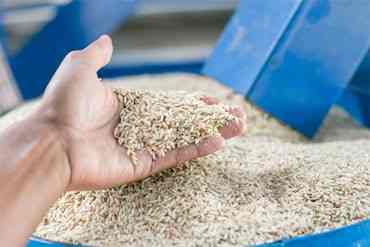 Rice Industry
Rice Industry 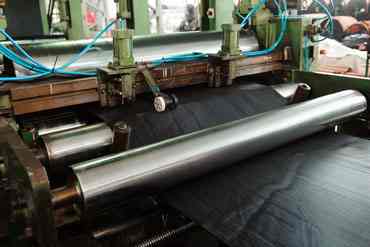 Rubber Industry
Rubber Industry  Soap Industry
Soap Industry  Sugar Industry
Sugar Industry  Textile Industry
Textile Industry  Tyre Industry
Tyre Industry